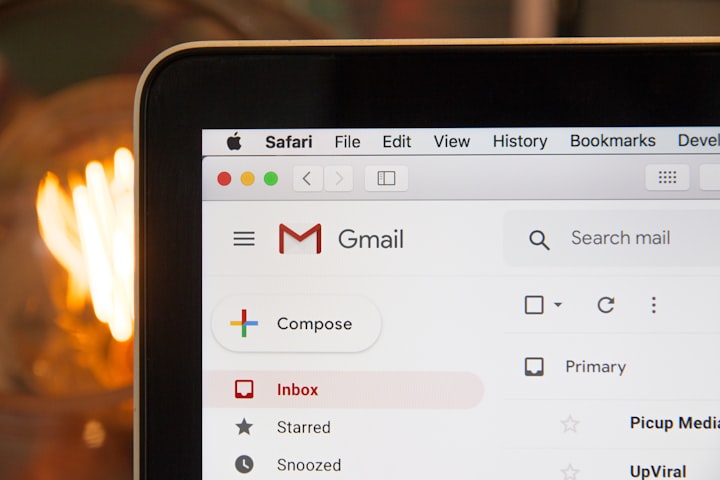Internet Marketing Tips to promote Yourself Online
Learn The Hacks of Internet Marketing
Paid advertising
Everyone who is in any way connected with business has heard about contextual and targeted advertising many times. First of all, such advertising is used to familiarize the audience with your product and subsequent sale.
The general mechanism is as follows:
1. Facebook, Google, and other systems have advertising platforms - places where they sell ads.
2. You place ads through advertising systems, while showing ads only to those users who are more likely to be interested in your product or your service. You independently choose which users you will target (based on the opportunities that the advertising system provides you).
3. A potential client goes to the site and, if your offer interests him, he takes the target action (leaves contact information, registers, etc.). Example of this is Udimi.
4.With the help of web analytics, you record visits and targeted actions on the site, and also understand how much you pay for each attracted client.
Social Media Marketing (SMM)
Social media pages are the face of your company. Many people, before buying a product or ordering a service, look for reviews and photos on social networks in order to get a more complete impression of the brand. The company's active presence on social networks increases trust, and if you publish content that is interesting and useful to your target audience, then you form a community of loyal customers around you.
A company's social media page can help solve several problems:
1. Communication with the target audience.
2. Increasing brand awareness.
3. Formation of a community of loyal customers.
4. Sale of goods and services.
Depending on the tasks that you want to solve, the SMM promotion strategy will be built in different ways.
General guidelines for maintaining social networks
1. Choose the social networks your audience prefers and create your company pages. The most popular now are Instagram, Facebook, Telegram, TikTok - in these social networks you can find an audience in almost any segment.
2. Make a content plan based on the tasks that you want to solve. If your goal is to build a community around your brand, prepare useful and educational content and news stories that spark discussion. In general, when preparing content, ask yourself often: "How can a post in the community be useful to subscribers?"
When you share knowledge openly, the level of trust in you as an expert is automatically increased, and clients see no obstacles to turning to you for help. This principle works well on social networks, because the audience willingly shares useful materials, and smart feeds appreciate such posts and begin to rank your posts among the relevant audience, and not only among the subscribers of the community.
3. Remember that social media sales are not always direct sales. Especially if your industry has a long buying decision cycle. Social media can play a role at different stages of the sales funnel: at the first touch to acquaint you with the brand and product features, show your expertise and build trust; in the later stages - prepare for the purchase and help make a decision in favor of your brand.
4. Monitor the reaction of the audience to your publications and analyze the indicators: coverage of publications, likes, reposts, the number and quality of comments, conversions and conversions by utm tags. This will help you understand which content is interesting to your audience and which does not work or has stopped working.
5. You can develop your community through targeted advertising and publications in other communities. It is almost impossible to grow the audience of the commercial community without advertising, so targeting and seeding in other thematic publics is a necessary regular process to attract new subscribers.
6. Follow trends and new tools on social networks. What challenges are being launched now, what memes are popular, what new masks have appeared in stories. Use these trends for your communications when you are confident that it will be appropriate.
7. Run contests. Maintaining social networks is not only about publishing content, but also about interacting with subscribers. Contests will help stimulate activity on your page, increase customer loyalty, and even solve some of your marketing tasks (for example, collecting leads or a base for retargeting). Decide what results you expect from the contest and choose one of a dozen mechanics: from the repost contest to large-scale gamification.
8. Watch what others are doing and try to stand out from them. This is not only about competitors, see what content is released in other popular public pages, what the audience is responding to and what formats are popular now. Remember that there are thousands of other influencers fighting for audience attention besides you, so you really need to put in the effort to win this fight.
SEO
It's not enough just to create a beautiful website, fill it with goods, connect payment and delivery services. It also needs to be found by your customers. This is precisely the main task of SEO - to make sure that people who search the Internet for your products or services find them.
Sounds good, but the reality is not that simple. It takes a lot of work to collect a lot of organic traffic, but first you have to understand the nuances of search engine optimization. We will not be able to provide a comprehensive SEO guide in this article, but we will tell you about the main stages of working on a website and indicate what you should pay special attention to.
1. Collect the semantic core
The place to start is to find out if someone is even looking for what you are selling by looking at search demand. This can be done with Google trend tools . They show how many people have entered a particular query in the search bar lately. Do not forget to indicate the region: statistics can vary greatly in different cities and even more so in countries.
2. Work out the semantics
Search engines are pretty good at figuring out what exactly the user had in mind when formulating their request, do not try to circle them, trying to promote your site for the query "red bags" if you only sell green (yes, these are also bags, but the user looking for others, and the search understands this).
Sometimes it can be difficult to understand what the user means, especially when he formulates his request concisely, without clarifications. If you are in doubt whether it is worth taking a request, look at the results for it: if there are the same sites as yours, then there are chances. If the search results are sites of a different type (for example, informational), then, most likely, the request will not suit you.
3. Conduct a competitive analysis
Explore which sites are currently showing in the first places for your selected queries.
Then answer yourself these questions:
• Is your site better?
• Is the product competitive?
• Can you prepare content that will better solve user problems?
For competitive analysis, use jaaxy and mangools
4. Get involved in technical website optimization
It is important that your site matches the requirements of the search engines. For example, in order for it to load quickly, all content is available to robots and there are no duplicate pages or uninformative pages. There are many parameters, they are universal for most sites.
5. Optimize your content
Much of the success of search engine optimization depends on your content work. If a user, entering your site, finds an answer to his request and solves his problem, the search engine will reward you with a high position. It is not enough just to use certain phrases in the text: if the user's request contains the phrases “buy online”, then you should be able to buy your product directly on the site.
To do this, work through:
• meta tags,
• headers,
• texts.
In addition to technical and textual factors, there are also behavioral and commercial factors. How the user interacts with your site is important. For example, a high bounce rate will signal that the content on your page is presented inconveniently or does not match the request. Search engines are concerned about the safety of the user on the network and try to protect him from scammers as much as possible: you need to prove that you are not one of them. Indicate on the site the most detailed information about the company, as much contact information as possible, a map of the route, add prices, connect various payment methods and channels to contact you: all this will play a role in the ranking of the site in the search results.
Do not forget that an additional signal that your site is worthy of high positions for search engines are links to it from other sites. The more solid the site that links to yours, the better. Post reviews of your products, information about goods and services, about the company's activities on other sites, not forgetting to put an active link to your site. It's important not to spam - links must be relevant. Do not try to trick the search engine by using cheats - the punishment for such actions can be quite serious, and will negate all your previous efforts.
Content marketing
Content marketing is the promotion of your products or services with content that is useful to the audience, which should address:
In the very concept of "content marketing" there are two components - content and marketing.
• Content is what you create. It can be text (articles, instructions, cases, etc.), visual (webinars, presentations, infographics, online courses, image videos), auditory (podcasts, tracks).
• Marketing is how you promote the content you create (via emails, social media, paid ads, media, etc.).
Since content marketing is most often understood as the preparation and promotion of text content, let's dwell on it in more detail. To get started, we recommend reading the materials
Basic types of text content
• Expert (you share your experience and gain a place in the market). This type of content is fine if you really have a story to tell people. The main goal is to grow a loyal audience, which will then become your clients and brand advocates.
• Educational (with the help of content, you help the audience learn something new for it, of course, this new one should be related to your product, which you can offer along the way).
• Selling (or "bribing"). Probably the most common type of content on the internet. The main goal is to interest the user (with the help of a cool product, new features or lucrative offers) and motivate him to take the next step, which will bring him closer to buying a product / service: sign up for a demo presentation of the product, leave a request or your contact information.
Also, the content can be entertaining, hype and any other that you can think of.
Web analytics
The possibility of detailed analytics and collecting point data are the main differences between Internet marketing and classic marketing. Web analytics allows you to understand how users behave on the site and helps the business to improve the effectiveness of marketing activities.
Google Analytics Traffic Panel
Web analytics helps businesses:
• look for growth points,
• effectively spend your marketing budget,
• look for insights for product development.
1. Register accounts in Google.
2. Install tags Google Analytics on the site and check their work (best of all with the help of Google Tag Manager).
3. Set up event dispatch and goals in analytics systems.
4. Link ad accounts to analytics systems..
5. Create custom reports for traffic analytics.
Email Marketing
Email marketing is an online marketing tool that allows you to build direct communication between a brand and a consumer through email communications (mailings).
Many people call emails just spam, but they are not. They serve different purposes and are extremely useful. For example, there are:
• Trigger emails that we send to users when they take some key action. They are usually used in welcome chains, introductory emails, and so on.
• Transactional emails are already intended to be upsells and also to encourage completion of a purchase (eg, an abandoned cart scenario).
• Content emails simply tell your subscribers about interesting updates to the service and its capabilities.
Each type of letter is better suited to certain stages of the sales funnel: if you are trying to bring a user back to make a second purchase, sometimes it is most logical to offer him a "new level of difficulty", and at the stage of acquaintance it is more important to go through the client's pain and describe how your product will help deal with them.
It is also important to collect the base of users to whom you will send these letters. There are three of the most popular options:
• Formation of the base during registration on the site.
• Subscription form on the site, which is not related to the registration form (news subscription, blog updates, etc.).
• Lead collectors on landing pages.
Important: remember that the user must agree to receive your emails, otherwise what you send them will be spam.
There are different postal services through which you can send letters. For example, we use MailChimp. It has a free trial and different plans to suit different types of businesses.
Mini-guide: how to start your first mailing list in MailChimp
Go to the getresponse website , register a free account. To do this, after confirming your email address, sign up for the free training or Watch this Tutorial To learn How to use Moosend.
3. Next, go to the Campaigns section to create your first campaign. Please note that first, when creating a campaign, you enter only the name that you personally need to find the mailing list in the general list of campaigns.
4. You will see a section with setting up the campaign itself. You choose to whom you are going to send the letter (entire sheet or segment). The "from" field is filled in automatically, but you can customize it further. After choosing a topic, you can start designing your newsletter.
5. If you have a free plan, you can customize your email design only in the online builder. If you want to customize emails and use layout (i.e. HTML, CSS), you need to choose the Standard plan.
6. After customizing your design, be sure to send yourself a test email to check if everything is displayed correctly.
7. Now it remains to send the letter. You can do it right away or schedule a shipment by choosing a day of the week and time.
8. After sending, follow the statistics and improve your letters.
About the Creator
MySelf-Help Hub
Getting Self-Help Tips From People Who Care







Comments (1)
Thank you so much for telling me, I didn't even know there was a service that could help me. I will definitely be contacting them.